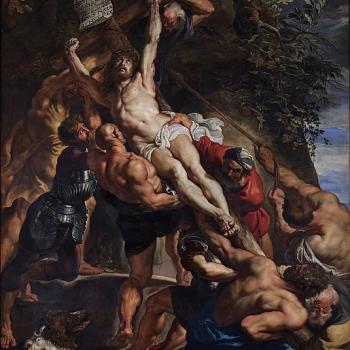In the midst of all of the talk about Redeemed Rambling’s critique of the appearance of this blog, the consensus that this blog has a good design really, the addition of Cranach’s seal with its many variations, the minor suggestions that people put forward, and the tweaks that Stewart implemented, commenter Tom Hering–who knows a thing or two about design–was kind enough to design some other possible headings for the title of this blog. I really liked the one with quasi-medieval lettering and the colorful version of Cranach’s seal. I also like how it adds a touch of color–antiquated parchment color–without taking away from the clear black on white posts. So Stewart put it up.
So what does Cranach’s seal mean? It’s very simple, if we go by the original intention: It means Lucas Cranach! The device of the winged serpent bearing a ring is part of his coat of arms, as awarded by Frederick the Wise. Knights had their coats of arms on their shields, and Kings used them on their royal seals. The Kings of England had three lions. The Holy Roman Emperors had a two-headed eagle. Shakespeare’s was a shield with a diagonal spear, which presumably could be shaken. Middle class types, such as Shakespeare and Cranach, could be granted a heraldic seal in recognition of their services or contributions, and they were typically very proud of that sign of semi-nobility and used it everywhere they could. So Cranach signed his paintings with his device, which existed in many different forms, from the realistic to the abstract. This one has the most artistic elements, in my opinion.











